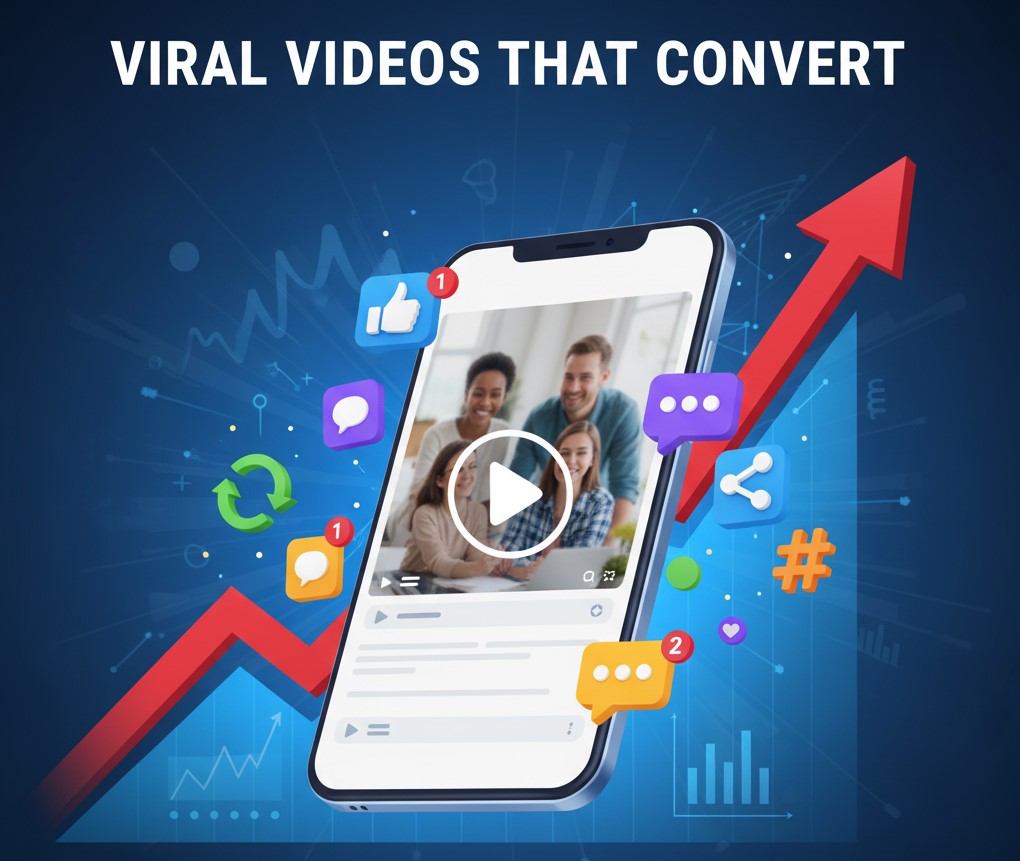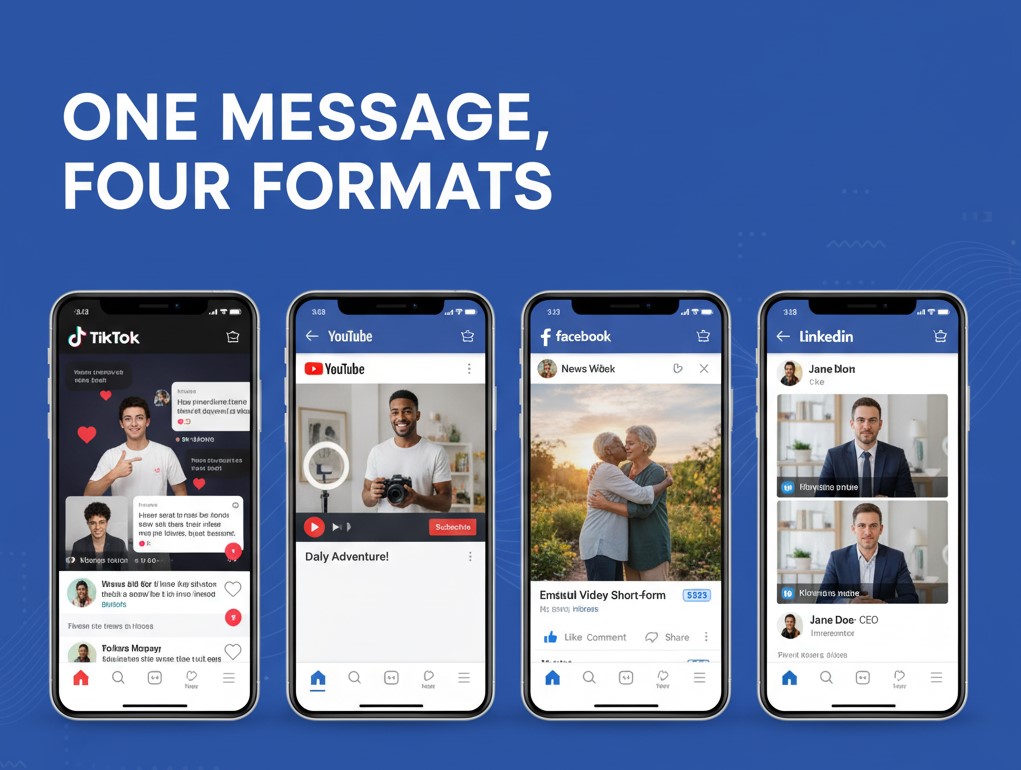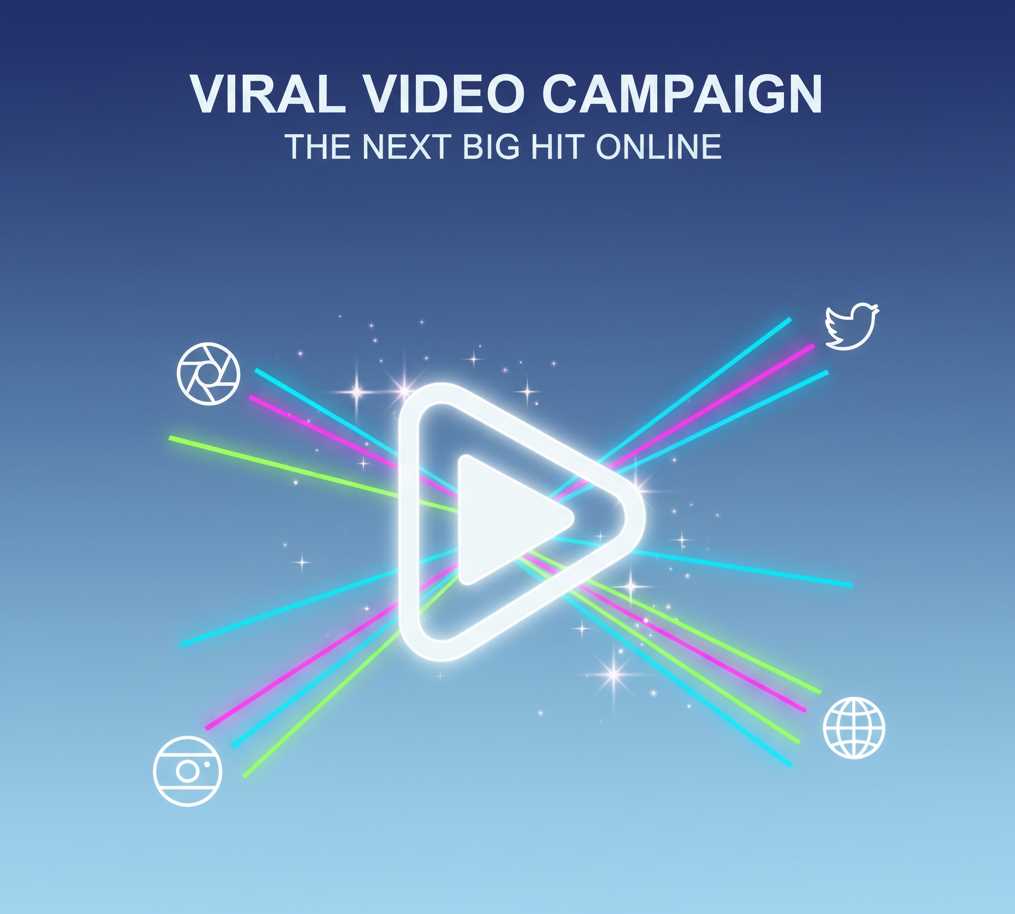
Everyone wants their video to go viral. The dream is to create a piece of content that spreads like wildfire across the internet, racking up millions of views, shares, and comments. But virality alone doesn’t pay the bills. A video can get all the attention in the world, but if it doesn’t lead to meaningful business results—like sales, sign-ups, or brand loyalty—it’s just a fleeting moment of internet fame. The real challenge is creating a viral video campaign that actually converts.
This isn’t about chasing fleeting trends or relying on dumb luck. Crafting a video that both captures mass attention and drives action requires a strategic blend of creativity, psychology, and marketing savvy. It involves understanding what makes people tick, what compels them to share, and how to seamlessly guide them from viewer to customer. A successful campaign is an art and a science, demanding a deep understanding of your audience and a clear vision for your brand.
This guide will reveal the ten essential secrets behind creating a viral video marketing strategy that does more than just entertain. We will explore the actionable steps and core principles that turn views into value, helping you build a campaign that not only gets seen but also delivers measurable results for your business.
1. Start with a “Shareable” Emotion
The foundation of any viral content is emotion. People don’t share facts and figures; they share feelings. Research from Fractl found that the most common emotions associated with viral content are positive ones like awe, amusement, and joy. However, feelings like anger and anxiety can also be powerful motivators for sharing, especially when tied to social or political issues.
Your first step is to decide which core emotion you want to evoke.
- Awe and Wonder: Apple’s “Shot on iPhone” campaign often showcases breathtaking landscapes and intimate moments, leaving viewers in awe of the camera’s capabilities and the beauty of the world.
- Humor and Amusement: The Dollar Shave Club’s launch video is a classic example. Its witty, self-aware humor was so refreshing that it became an instant hit, making people laugh and share it with friends.
- Inspiration and Hope: Dove’s “Real Beauty Sketches” campaign tapped into a deep-seated desire for self-acceptance, creating a powerful, emotional video that resonated with millions and sparked a global conversation.
To make your content shareable, the emotion needs to be strong and clear. A video that tries to be funny, sad, and inspiring all at once will likely fail to connect on any level. Focus on one primary emotion and build your entire creative concept around it.
2. Craft a Compelling Story, Not a Sales Pitch
The biggest mistake brands make in video marketing is leading with the product. People are naturally resistant to being sold to. Instead of a direct sales pitch, tell a story that your audience can connect with on a personal level. A great story has a relatable character, a clear conflict, and a satisfying resolution.
Think about the classic narrative structure:
- The Setup: Introduce a character or situation your audience can identify with.
- The Conflict: Present a problem or challenge that creates tension. This is where your audience’s emotional investment deepens.
- The Resolution: Show how the conflict is resolved. Your product or brand can play a role here, but it should feel like a natural part of the story, not a forced advertisement.
A great example is the “Like a Girl” campaign by Always. The video didn’t talk about menstrual products. Instead, it told a powerful story about how the phrase “like a girl” becomes an insult during puberty, challenging viewers to redefine its meaning. The brand was the facilitator of the message, not the focus of it, creating a much more authentic connection.
3. Prioritize the First 3 Seconds
In the age of endless scrolling, you have mere seconds to capture someone’s attention. The first three seconds of your video are the most critical. If you don’t give viewers a reason to stop and watch, they will simply scroll past.
To create a powerful hook, consider these strategies:
- Start with a Question: Pose an intriguing question that piques curiosity.
- Show Surprising or Unusual Imagery: A visually arresting opening can make people pause.
- Create Mystery: Begin in the middle of the action, forcing the viewer to wonder what’s going on.
- Address the Viewer Directly: Speaking directly to the audience can create an immediate sense of connection.
Whatever you choose, it needs to be bold and immediate. Don’t waste time with slow-panning logos or lengthy introductions. Jump straight into the heart of your content.
4. Make it Visually Stunning (On a Budget)
Virality doesn’t require a Hollywood-level budget. Many of the most successful viral videos were shot on smartphones. What matters more than expensive equipment is a strong visual identity and a clear creative vision. High-quality visuals are about clarity, composition, and style—not just resolution.

Here’s how to create visually appealing content without breaking the bank:
- Lighting is Everything: Good lighting can make even a simple setup look professional. Use natural light whenever possible or invest in an affordable ring light.
- Stable Your Shots: Shaky footage looks amateurish. Use a tripod or even a stack of books to keep your camera steady.
- Focus on Composition: Use basic principles like the rule of thirds to frame your shots in a visually pleasing way.
- Color Grading: Simple color correction and grading can dramatically improve the mood and polish of your video. Many free editing apps offer these features.
The goal is to create a video that looks intentional and polished, regardless of the budget.
5. Subtitles are Non-Negotiable
A huge portion of videos on social media are watched with the sound off. According to a Verizon Media study, 69% of people view videos without sound in public places, and 85% of Facebook videos are watched on mute. If your video relies on dialogue or a voiceover to be understood, you’re losing a massive segment of your potential audience.
Subtitles ensure your message gets across even when the audio is off. They make your content more accessible to people who are deaf or hard of hearing, and they can even improve comprehension for those watching with sound.
When creating subtitles:
- Make them easy to read: Use a clear font and ensure there’s enough contrast with the background.
- Keep them concise: Don’t transcribe every single word. Edit for clarity and brevity.
- Time them correctly: Make sure the subtitles sync perfectly with the spoken words.
Platforms like YouTube and Facebook have auto-captioning tools, but always review them for accuracy.
6. Design for a Specific Platform

Not all social media platforms are the same. A video that performs well on TikTok might flop on LinkedIn. To maximize your chances of going viral, you need to tailor your video to the platform where you plan to share it.
- TikTok and Instagram Reels: These platforms favor short, fast-paced, vertical videos. Trends, popular sounds, and quick cuts are key. The tone is often informal and humorous. Viral marketing on TikTok has become a game-changer for brands, offering explosive organic reach through algorithm-powered discovery and community-driven content. If your campaign fits the style and speed of TikTok, it can scale far beyond what traditional ads achieve.
- YouTube: This is the home of long-form content. Viewers are more willing to invest time in tutorials, documentaries, and in-depth stories. Production quality is often higher, and a strong narrative is crucial.
- Facebook: Facebook’s audience is broader, and videos that evoke strong emotions (inspiration, humor, nostalgia) tend to perform well. Videos with text overlays and clear, shareable messages are effective.
- LinkedIn: The tone here is professional. Videos should be informative, insightful, and focused on industry trends, career advice, or business success stories.
A successful viral video campaign often involves creating different versions of a video for different platforms.
7. Include a Subtle and Organic CTA
This is where virality meets conversion. Your video needs a call-to-action (CTA) that guides viewers on what to do next. However, a traditional, hard-sell CTA like “Buy Now!” can feel jarring and ruin the emotional experience you’ve worked so hard to create.
The best CTAs are subtle, organic, and feel like a natural extension of the story.
- Implicit CTAs: Sometimes, the CTA is implied. The “Shot on iPhone” videos don’t explicitly say “Buy an iPhone.” They show you what the phone can do, and the desire to own one is the natural result.
- Community-Focused CTAs: Encourage viewers to join a conversation. Ask them to share their own stories using a specific hashtag. This builds a community around your brand and extends the life of the campaign.
- Link in Bio: For platforms like Instagram and TikTok, a simple “Link in bio to learn more” is a low-pressure way to direct interested viewers to your website or a landing page.
The key is to make the next step feel like the viewer’s choice, not a demand from the brand.
8. Leverage Influencers and Communities
You don’t have to build momentum all by yourself. Tapping into existing communities and leveraging influencers can give your video the initial push it needs to go viral.
- Identify Niche Influencers: Find influencers whose audience aligns with your target market. A micro-influencer with a highly engaged following can often be more effective than a mega-celebrity with millions of passive followers.
- Engage with Online Communities: Share your video on relevant subreddits, Facebook groups, or online forums. But don’t just drop a link and run. Participate in the community, provide context, and ask for feedback.
- Encourage User-Generated Content: Create a challenge or a hashtag that encourages people to create their own videos inspired by your campaign. This turns your viewers into active participants and co-creators.
9. Track, Analyze, and Optimize
Creating a viral video campaign is not a one-and-done effort. You need to constantly monitor your video’s performance and be ready to adapt your strategy.
Pay attention to these key metrics:
- View Duration: How long are people watching your video? If there’s a significant drop-off at a certain point, that part of your video may need to be re-edited.
- Shares: This is the ultimate indicator of virality. Which platforms are generating the most shares?
- Comments: What are people saying? The comments section is a goldmine of qualitative feedback.
- Click-Through Rate (CTR): How many people are clicking on your CTA? This metric directly measures conversion.
Use this data to optimize your campaign. You might boost the post on a platform where it’s performing well or tweak the thumbnail to improve the click-through rate.
10. Prepare for Success

What happens if your video actually goes viral? A sudden surge in traffic can crash your website, overwhelm your customer service team, or lead to a stockout. It’s crucial to have a plan in place to handle the influx of attention.
Before launching your campaign:
- Stress-Test Your Website: Make sure your servers can handle a significant increase in traffic.
- Prepare Your Team: Brief your customer service and social media teams on the campaign so they’re ready to answer questions and engage with comments.
- Check Your Inventory: If your video promotes a specific product, ensure you have enough stock to meet a potential spike in demand.
Going viral can be a double-edged sword if you’re not prepared. Proper planning ensures you can capitalize on the opportunity without damaging your brand’s reputation.
Your Path to Viral Conversion
Creating a viral video that converts is a challenging but achievable goal. It requires a shift in mindset—from creating ads to telling stories, from chasing views to building connections. By focusing on genuine emotion, compelling narratives, and a seamless user journey, you can create a campaign that not only captures the internet’s attention but also drives real, sustainable growth for your business. The secrets are out; now it’s time to put them into practice.
Frequently Asked Questions
How long should a viral video be?
There’s no magic number, but it heavily depends on the platform. For TikTok and Instagram Reels, aim for 15-30 seconds. For YouTube, you have more flexibility, but the content needs to be engaging enough to hold attention. The key is to be as long as necessary to tell the story and no longer.
How much does it cost to create a viral video campaign?
Costs can range from virtually zero to millions of dollars. The Dollar Shave Club video famously cost only $4,500 to produce. Focus on a strong creative idea rather than a big budget. A great concept will always outperform a mediocre one with high production value.
Can you guarantee a video will go viral?
No. Virality is never guaranteed. There are too many variables at play, including timing, cultural trends, and sheer luck. However, by following the principles outlined in this guide, you can significantly increase your chances of creating a video that resonates with a large audience and achieves your business goals.
Learn more about: How Brands Go Viral: The Psychology Behind Internet Fame










Leave a Reply